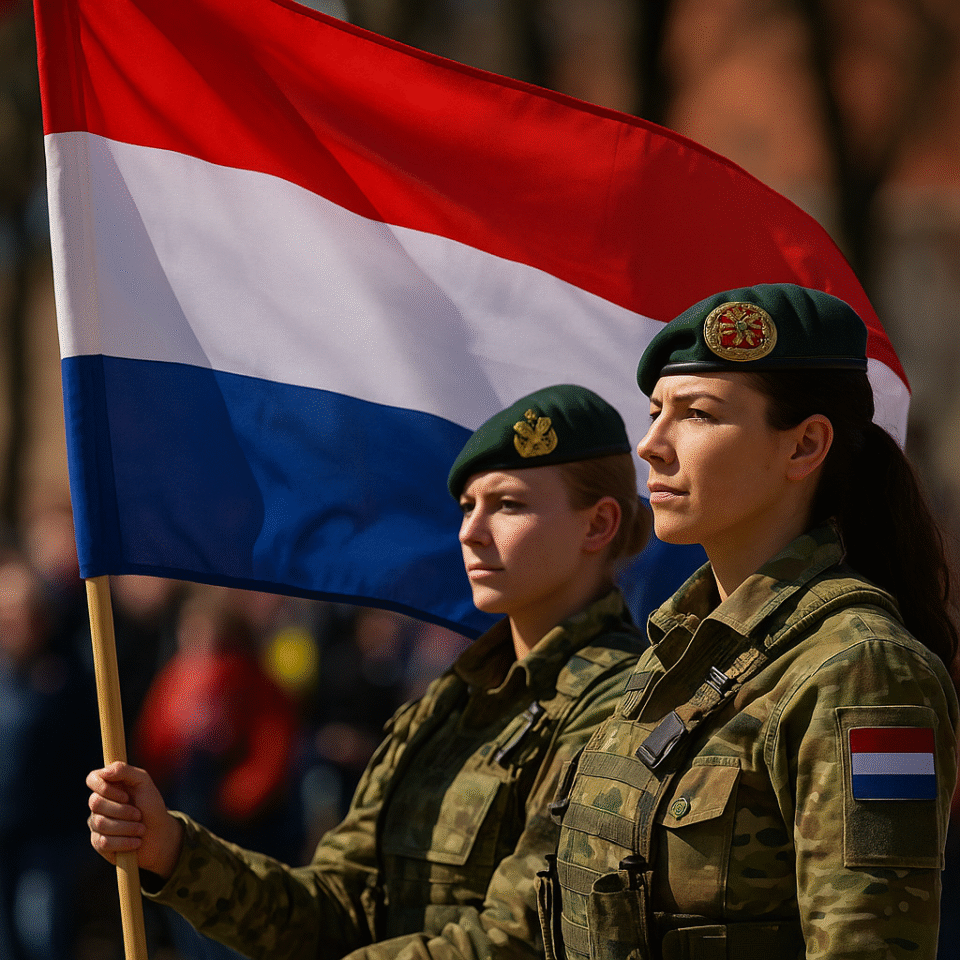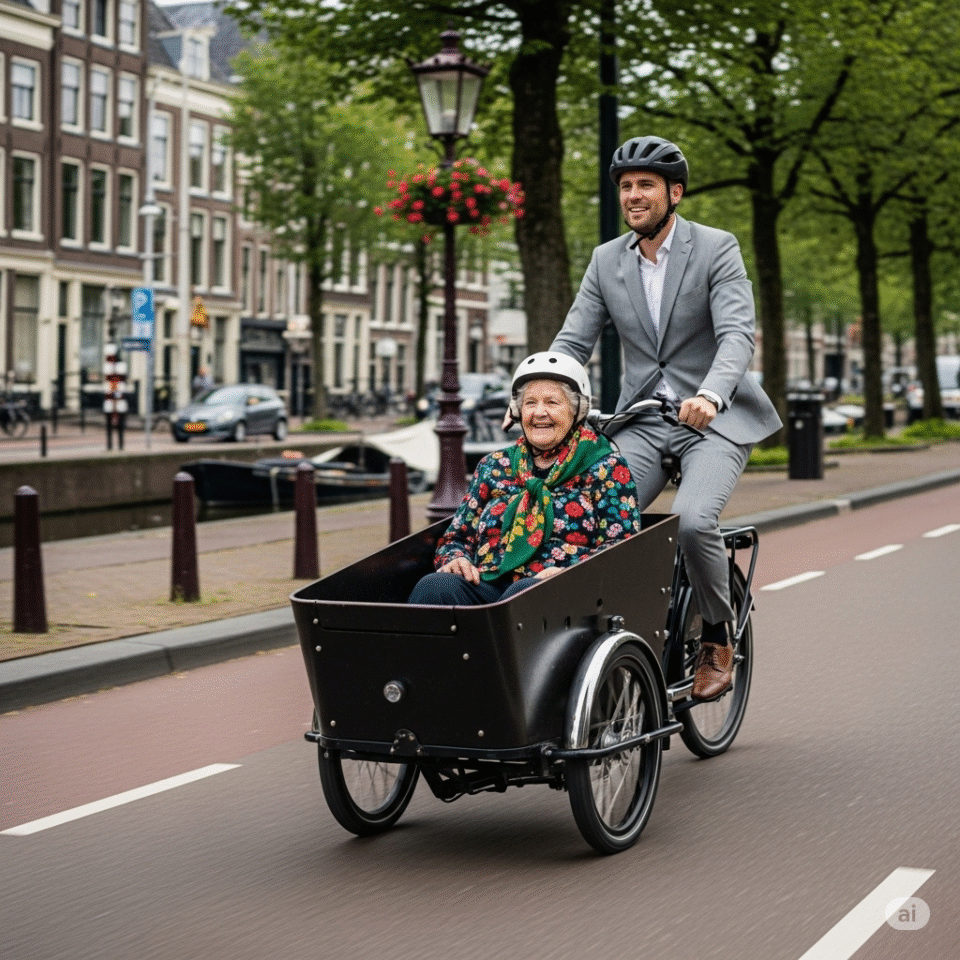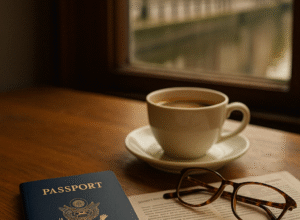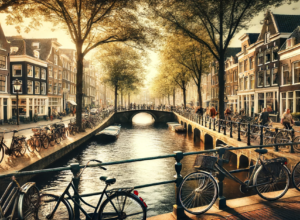In a world where national identity often intersects with military might, the Netherlands offers a refreshing counterpoint to American expressions of patriotism. This cultural contrast reveals much about Dutch values and provides important context for Americans visiting or relocating to this pragmatic European nation.
A Tale of Two Countries
In America, military symbolism is inescapable, from jet flyovers at football games to “support our troops” bumper stickers, from military discounts at restaurants to the camouflage clothing section at your local department store. The military is woven deeply into the fabric of American identity and public life.
In the Netherlands? You might live there for months without ever seeing a person in uniform.
This stark contrast isn’t coincidental; it reflects fundamentally different national attitudes toward military power, patriotism, and how societies express their values in public spaces. For Americans interested in Dutch culture or considering relocation, understanding this difference provides valuable insight into the Dutch mindset.
America’s Ubiquitous Military Presence
The United States maintains the world’s largest military presence, with approximately 800 bases in 70+ countries. American defense spending exceeds the next nine countries combined, consuming roughly 3.5% of GDP annually. This massive footprint extends beyond geopolitics into everyday American culture.
Military worship permeates American life: standing ovations for veterans at sporting events, military-themed commercials during primetime television, and the obligatory “thank you for your service” when encountering someone in uniform. Post-9/11, this reverence intensified further, making military service a pinnacle of American civic virtue.
The visibility extends to fashion and entertainment: camouflage prints on civilian clothing, military-inspired video games, and Hollywood blockbusters celebrating American military might. Politicians from both parties compete to prove their commitment to troops and veterans, making military support a litmus test for American patriotism.
The Dutch Approach to Defense
The Netherlands maintains a professional, capable military, but it doesn’t make a spectacle of it. With approximately 40,000 active personnel (compared to America’s 1.3 million), the Dutch armed forces prioritize international cooperation, technological sophistication, and specialized capabilities.
While conscription technically still exists (17-year-olds must register), it hasn’t been enforced since 1997. The Dutch military focuses on its NATO commitments, peacekeeping missions, and maritime security, reflecting the Netherlands’ history as a naval power and its contemporary role in international institutions.
The Dutch defense budget hovers around 1.5% of GDP, which is below NATO’s 2% target but still representing significant investment in a modern, professional force. The difference lies not in capability but in cultural visibility and national emphasis.
Cultural Visibility (or Lack Thereof)
In the Netherlands, military symbols rarely enter public consciousness or space. You won’t see military flyovers at sporting events, soldiers in uniform shopping at grocery stores, or camouflage as everyday fashion. Dutch public buildings don’t typically display flags, and military monuments tend to be solemn memorials rather than celebrations of martial prowess.
You’ll still see the Dutch flag around, hanging from balconies, flying on national holidays, or proudly displayed during student graduation season with a backpack clipped to the pole. But it feels different. There’s a kind of soft pride to it, rooted more in culture, history, or quiet national identity than in political signaling. Unlike in the U.S., where the flag can sometimes feel like a test of loyalty or a symbol co-opted by specific ideologies, the Dutch flag hasn’t been weaponized. No one seems to expect you to fly it. No one asks if you love your country based on how visibly you show it. It’s present, but not performative.
This absence reflects broader Dutch cultural values: pragmatism over symbolism, cooperation over dominance, and a measured approach to nationalism. The Dutch are proud of their country, they just express it differently. Their identity centers more on civil achievements: water management, social tolerance, artistic contributions, and economic success.
The Dutch relationship with their military is respectful but not reverential. Military service is viewed as an honorable profession among many others, not an elevated calling that demands special public acknowledgment. This creates a notably different atmosphere in public spaces, one lacking the militarized undercurrent that many Americans may not even realize permeates their own society.
What This Feels Like as an American Abroad
For Americans in the Netherlands, this cultural difference can be initially jarring. Some experience it as something missing, a familiar background element of patriotic display suddenly absent. Others find it refreshingly peaceful, particularly those who felt uncomfortable with America’s post-9/11 militarization of public life.
Over time, many Americans come to appreciate the Dutch approach. The absence of aggressive patriotism can feel liberating, creating public spaces free from the subtle tensions that militarized symbols sometimes create. National identity becomes something lived rather than performed, expressed through practical action rather than ceremonial display.
This perspective shift often extends beyond military matters, leading Americans to question other aspects of public life they previously took for granted. The Dutch alternative offers a different model of how a democratic society can acknowledge its military without placing it at the center of national identity.
Do the Dutch Still Have a Military?
Yes, and it’s quite sophisticated. The Netherlands maintains specialized forces with particular strengths in naval operations, special forces, cyber defense, and technological innovation. Dutch military units regularly participate in international missions, from UN peacekeeping to NATO operations.
The Royal Netherlands Navy has a storied history dating back to the 17th century, and remains a point of quiet national pride. Dutch special forces are highly regarded within NATO, and their defense industry develops advanced technologies despite the country’s modest size.
The difference is that these capabilities exist largely out of public view—professionals doing their jobs without fanfare or glorification. The military serves the state rather than symbolizing it, pursuing security goals without becoming a cultural touchstone.
The Dutch military also stands out for its inclusivity. Women have served in all branches for decades, and LGBTQ+ individuals have been able to serve openly since the 1970s, long before many other NATO allies followed suit. The armed forces reflect the broader values of Dutch society: equality, tolerance, and professionalism over posturing. You’re more likely to see a female officer leading a training exercise or a group of service members marching in the Amsterdam Pride Parade than you are to find anyone flexing macho military bravado. It’s another quiet contrast that speaks volumes.
What a Country Chooses to Celebrate
The contrast between American and Dutch approaches to military visibility reveals deeper cultural values. Americans celebrate individual heroism, power projection, and martial virtue; the Dutch emphasize consensus, diplomatic influence, and civilian achievement.
Neither approach is inherently superior, but understanding this difference helps Americans navigate Dutch society more effectively. It explains why overt patriotic displays that feel normal in America might seem oddly performative in the Netherlands, and why Dutch pragmatism about national defense isn’t indifference but a different cultural orientation.
For Americans living in or visiting the Netherlands, this perspective shift offers a valuable opportunity for reflection. The Dutch don’t ignore their military, they just don’t place it on a pedestal. And after experiencing this alternative approach, many Americans can’t help but wonder: What might America look like if we related to our military differently?
Understanding this cultural distinction helps Americans appreciate the Netherlands on its own terms, recognizing that national pride and security consciousness can take many forms, not all of them requiring a military salute.








